 Throughout history women have made their mark in a wide variety of ways. Each Saturday I plan to highlight one of these remarkable women. There will be no limit to the areas of history that I may include; however as a guide I will look to the month of their birth, the month of their death or the month associated with their mark in history when I select them. Is there an outstanding women in history you would like me to include? I welcome your suggestions. Would you like to guest blog one of the world’s outstanding women? Let me hear from you.
Throughout history women have made their mark in a wide variety of ways. Each Saturday I plan to highlight one of these remarkable women. There will be no limit to the areas of history that I may include; however as a guide I will look to the month of their birth, the month of their death or the month associated with their mark in history when I select them. Is there an outstanding women in history you would like me to include? I welcome your suggestions. Would you like to guest blog one of the world’s outstanding women? Let me hear from you.
To read previous posts in this segment, there is a menu at the top of my site. Today I celebrate a woman known for her documentation of the oral history and legends of the Sioux people. Meet Ella Cara Deloria.
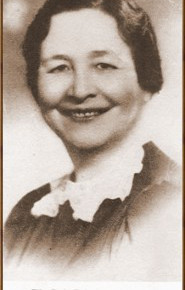
Ella Cara Deloria
Her native name among the Sioux was Aŋpétu Wašté Wiŋ (Beautiful Day Woman). Ella Cara Deloria was an educator, anthropologist, ethnographer, linguist, and novelist of European American and Dakota ancestry. She recorded Sioux oral history and legends, and contributed to the study of their languages. In the 1940s, she wrote a novel, Waterlily. It was finally published in 1988, and in 2009 was issued in a new edition.

Waterlily written by Ella Cara Deloria in 1940s but not published until 1988 (18 years after her death). The novel follows two generations of Sioux women, Blue Bird and Waterlily; a mother-daughter pair who both learn through life experiences the meaning and importance of kinship. Waterlily takes place in the Great Plains of the Midwest and recounts the nomadic nature of the Sioux camp circle. The Sioux term for camp circle, tiyospaye, is an essential throughout the novel as a driving force for bonding, conflict, relationships, and change. Although Waterlily is told from a third-person omniscient point of view, it is unique in that it is focuses mostly on women’s roles and experiences in Dakota society.
Early Life and Education
- Born on January 31, 1889 in the White Swan district of the Yankton Indian Reservation, South Dakota.
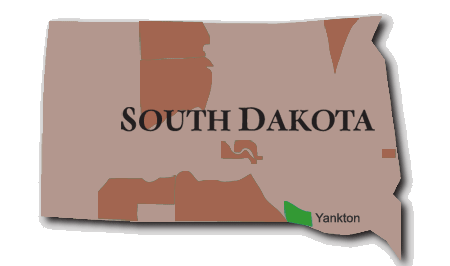 Of Yankton Dakota, English, French and German roots, her parents were Mary (or Miriam) (Sully) Bordeaux Deloria and Philip Joseph Deloria (One of the first Sioux to be ordained an Episcopal priest.
Of Yankton Dakota, English, French and German roots, her parents were Mary (or Miriam) (Sully) Bordeaux Deloria and Philip Joseph Deloria (One of the first Sioux to be ordained an Episcopal priest.

Philip Joseph Deloria
- Deloria was brought up on the Standing Rock Indian Reservation, at Wakpala

Map of Standing Rock Indian Reservation
- She was educated first at her father’s mission school, St. Elizabeth’s and All Saints Boarding School.

Ella Cara Deloria
- She went to a boarding school in Sioux Falls.
- After graduation, she attended Oberlin College, Ohio, to which she had won a scholarship.
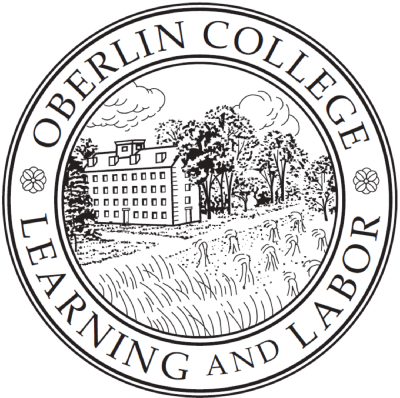
Formal Seal of Oberlin College
- After two years at Oberlin, Deloria transferred to Teachers College, Columbia University, New York, and graduated with a B.Sc. in 1915.
Professional Life and Achievements
Her work with the linguistics of Native American languages began when she met Franz Boas while at Teachers College. Her professional association with him lasted until his death in 1942.

Franz Uri Boas, July 9, 1858 – December 21, 1942
German-American anthropologist and a pioneer of modern anthropology who has been called the “Father of American Anthropology”
At this time she also worked with Margaret Mead and Ruth Benedict, prominent anthropologists who had been graduate students of Boas. Deloria herself never had the finances to earn an advanced degree but she belonged with this group as she had the advantage of fluency in the Dakota, Lakota, and Nakota dialects of Sioux, in addition to English and Latin.

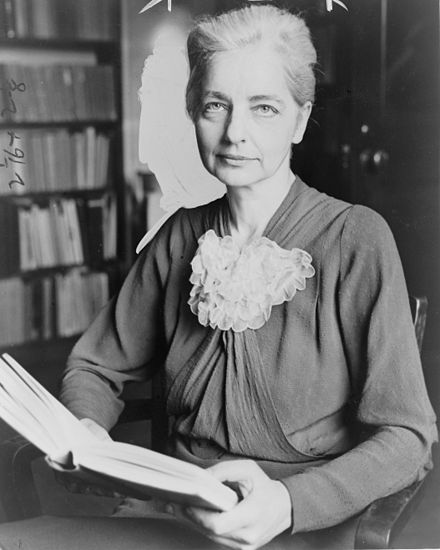
An advantage is an understatement. Her linguistic abilities and her intimate knowledge of traditional and Christianized Sioux culture, together with her deep commitment both to American Indian cultures and to scholarship, allowed Deloria to carry out important, often ground-breaking work in anthropology and ethnology. Here are a few of those achievements:
Translated into English several Sioux historical and scholarly texts:
- the Lakota texts of George Bushotter (1864-1892), the first Sioux ethnographer (the scientific description of the customs of individual peoples and cultures.)

Collections Search Center, Smithsonian Institution. George Bushotter Drawing.
- the Santee texts recorded by Presbyterian missionaries Gideon and Samuel Pond, brothers from Connecticut.
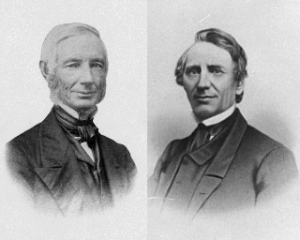
Samuel & Gideon Pond
Conducted important work for the United States Government:
- In 1938-39, Deloria was one of a small group of researchers commissioned to do a socioeconomic study on the Navajo Reservation for the Bureau of Indian Affairs; it was funded by the Phelps Stokes Fund. They published their report, entitled The Navajo Indian Problem. An excerpt of the publication can be read here. This project opened the door for Deloria to receive more speaking engagements, as well as funding to support her continued important work on native languages.
- In 1940, she and her sister Susan went to Pembroke, North Carolina to conduct some research among the self-identified Lumbee of Robeson County. The project was supported by the Bureau of Indian Affairs and the federal Farm Security Administration.

Her importance to the Native American nations:
Since the late 19th century, these mixed-race people, free before the Civil War as free people of color had been recognized as an Indian tribe by the state of North Carolina, which allowed them to have their own schools, rather than requiring them to send their children to schools with the children of freedmen. They were seeking federal recognition as a Native American tribe.
- Deloria believed she could make an important contribution to their effort for recognition by studying their distinctive culture and what remained of an Indian language.
- In her study, she conducted interviews with a range of people in the group, including women about their use of plants, food, medicine, and animal names.
- She came very close to completing a dictionary of what may have been their original language before they adopted English.
- She also assembled a successful pageant with, for and about the Robeson County Indians in 1940 that depicted their origin account. At that time they claimed to be descended from English colonists of the Lost Colony of the Outer Banks region in North Carolina and Croatan Indians. A scheduled 1941 performance was cancelled when Pearl Harbor was bombed by the Japanese.
Recognized by universities, learned foundations and societies:
Deloria received grants for her research from Columbia University, the American Philosophical Society, the Bollingen Foundation, the National Science Foundation, and the Doris Duke Foundation, from 1929-1960s. In 1943, Deloria won the Indian Achievement Award. In 2010, the Department of Anthropology of Columbia University, Deloria’s alma mater, established the Ella C. Deloria Undergraduate Research Fellowship in her honor.
Deloria had a stroke in 1970, dying the following year of pneumonia. She was compiling a Lakota dictionary at the time of her death. Her extensive data has proven invaluable to researchers since that time.
